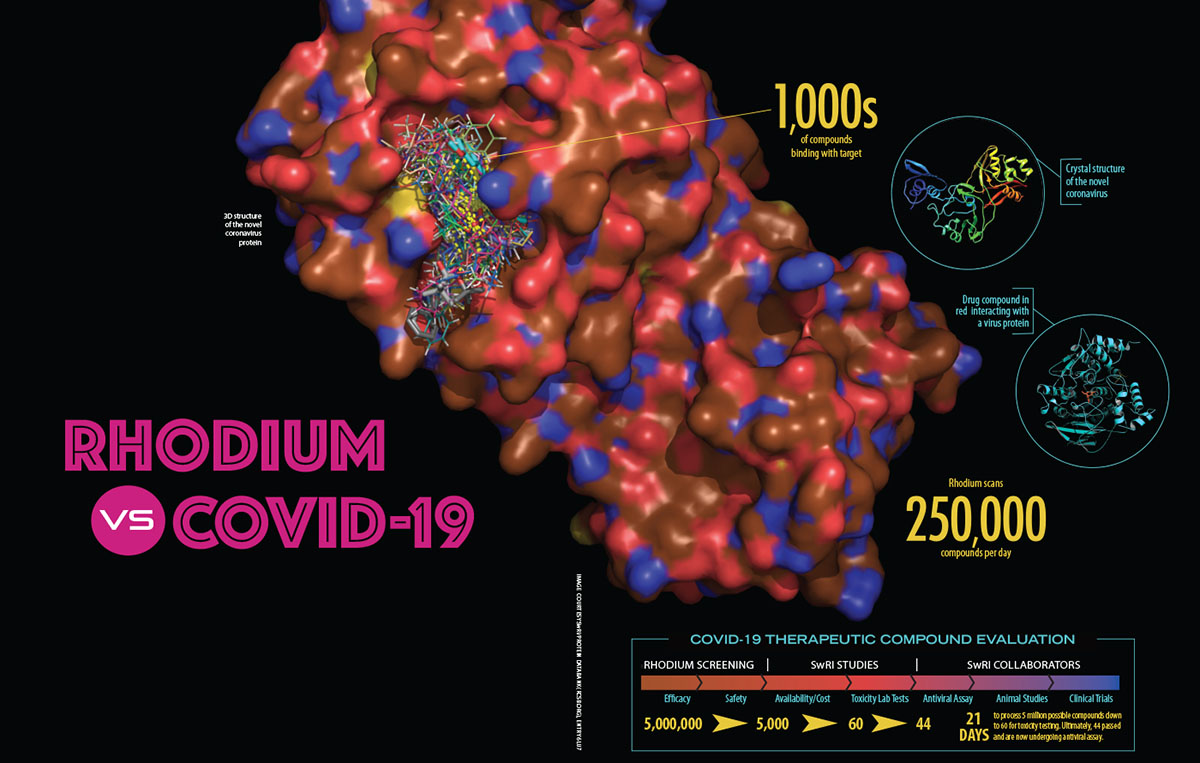Southwest Research Institute scientists used drug discovery software to virtually screen millions of drug compounds for possible treatment of coronavirus and other infectious diseases. Rhodium™ is a novel structure-based virtual screening tool developed by SwRI’s chemical engineers and computer scientists. Rhodium speeds up the preliminary efficacy and safety evaluations. We work with commercial and government organizations to select and develop the best candidates for animal testing and eventually clinical trials. Developing treatments and vaccines takes 12 to 18 months.
Prior to the recent coronavirus outbreak, SwRI had increased the capacity of its Rhodium software to scan 250,000 drug compounds per day, up from its prior limit of 25,000. Researchers enhanced the capability with new graphical processing, software updates and machine learning techniques. A 3D model of a coronavirus was used to evaluate potential drugs from a vast library of compounds.
Using the 3D structure of the viral protein, Rhodium screens drug compounds in a few days, hoping to identify high-probability drugs that may have efficacy against the coronavirus with minimal adverse side effects. Institute scientists initiated the molecular modeling research with SwRI internal funding.
Virtual screening can rapidly increase the pace of drug discovery, particularly important in emerging disease situations. Rhodium applies computational techniques to evaluate small molecules and predict how protein structures in infectious diseases will bind with drug compounds. Drug makers have been turning to computational screening as a safe, efficient and cost-effective alternative to evaluating physical samples in a laboratory in the early stages of drug development.
Rhodium uses drug compound libraries to predict how protein structures in infectious diseases will bind with compounds or a series of compounds known as ligands. Rhodium’s high throughput 3D analysis of protein docking efficiently selects ligands to predict how a compound interacts with a virus’ protein structure. Its machine learning tools interpret data analysis for faster results.


